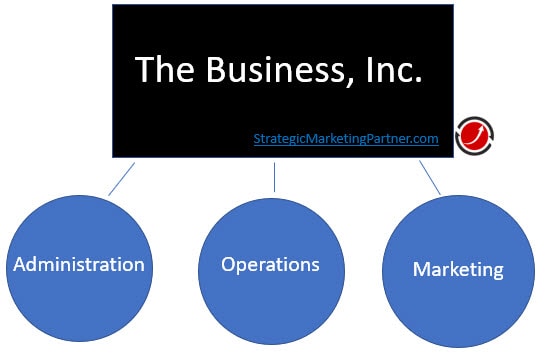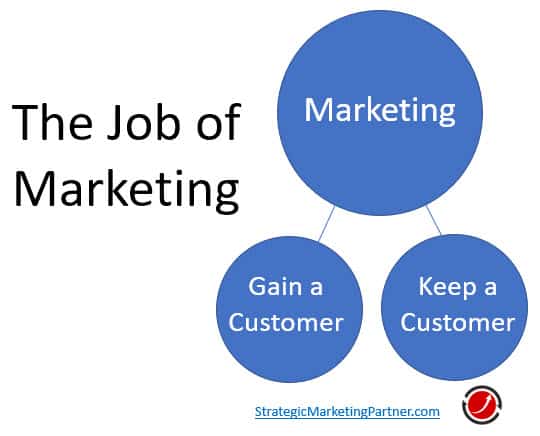How to make a breakthrough in business (+Checklist)
Dictionary.com defines a breakthrough as a Sudden, dramatic, and important discovery or development of achieving success in a particular activity. […]
Read More »Become a successful marketing consultant: Learn more

What comes to mind when you think of the “safest car on the road”?
What comes to mind when you think of “saving money on car insurance”?
What comes to mind when you think of the “beefy American road motorcycle”?
Chances are pretty high that you said:
This is an example of marketing.
A business entity has 3 key functional areas; 1) Operations, 2) Administration, and 3) Marketing. Marketing’s function in a business is a set of strategies and tactics that empower a company to: 1) gain new customers and 2) retain existing customers.
 These three companies, Volvo, Geico, and Harley Davidson have used these positioning statements to make billions in sales revenue driven by new customers and sales to existing customers who love the brand.
These three companies, Volvo, Geico, and Harley Davidson have used these positioning statements to make billions in sales revenue driven by new customers and sales to existing customers who love the brand.
You can do the same.
Let’s now look at the basic definition of marketing and then we can start to build some marketing strategies and marketing plans.
According to the American Marketing Association, marketing is “the activity, set of institutions, and processes for creating, communicating, delivering, and exchanging offerings that have value for customers, clients, partners, and society at large.”
Suman Vasan, Director of Customer Acquisition and E-commerce Marketing for Confirm BioSciences, defines marketing as a;
“Strategic and tactical execution of an initiative whose primary goal is to draw attention to a product or service.” He further adds that marketing requires the segmentation of approaches.
Clients and members of Your Strategic Marketing Partner know the basic definition of marketing is to:
At the end of the day, all business has to serve customers.
Nothing else matters.
Without customers there are no sales.
Without sales, there is no business.
Marketing is the one department that has real-time information and insight into the customer’s segments, buying habits, behaviors, wants and needs.
And virtually every department in the business is at least touched by the marketing department.
Marketing for a new product release
Let’s say your company is introducing a new product.
One of the ways to build awareness and gain new customers would be to utilize social media platforms like Pinterest, Instagram and Twitter.
This action is what we refer to as advertisement.
So, where does the marketing come in here?
Marketing is the entire process. Marketing encompasses several steps such as budget management, vendor management, product development, product packaging, graphics and design, copywriting, communications, advertising strategy, order procedures, sales funnel development, sales scripts, and of course, the overall marketing strategy and plan.
Many marketing types exist.
Currently, digital marketing approaches are getting a lot of attention.
Some of these digital marketing strategies and tactics include:
You probably know the famous retail brand IKEA. Mostly known for its furniture, this company also sells other household goods such as appliances and accessories.
This brand decided to take content marketing to a new level by incorporating Augmented Reality(AR). The company introduced the “Square Meter Challenge”. This campaign was a way to show their customers that IKEA understood their everyday problems, mainly how most people from large cities typically stayed in relatively smaller-sized apartments because of the expensive housing costs.
The company introduced the “IKEA Place” app, which uses AR to combine a realistic image of their space and a 3D image of furniture. As a result, users can test whether a sofa or a bed will fit and whether it complements your existing interior. This campaign generated lots of media buzz and pushed the company to the top 50 list of innovative companies globally.

Marketing is critically important in business. In fact, few things are more important next to providing the marketplace with an excellent product.
Here are a few more reasons why you need to include marketing in your daily operations.
How do you tell what your customers’ needs are? First, you need to understand your target audience. To do this, you’ll need data. Begin by examining your current customer base, taking note of their age, location, language, and interests.
Then, utilize social listening to research what people are saying about your brand. We recommend responding to these users, even those that do not follow your company. Perform a competitive analysis to see what others in the industry are doing and any gaps your company can fill. Finally, evaluate your product or service and use this data to determine your target audience.
Marketing requires developing a plan and strategy that will propel profits. These two components will ensure your company understands its market position, reputation, and current revenues. Arming yourself with such information allows you to set clear goals and increase your chances of success.
Knowing what products/ services to sell and at what price is an essential element of marketing. With rigorous market research, your company can get a clear sense of what customers are willing to spend and whether the company will earn profit.
In some cases, you may decide to offer your goods at a higher price than what competitors charge. Doing so builds the perception that your products/services are premier. Alternatively, you could lower the costs to increase your company’s market share or beat competitors.
Nurturing leads requires lots of time. It would be best to have a clear marketing plan to increase your prospects and get existing ones to progress in the buyer’s cycle. Various marketing techniques such as email and content marketing, and surveys are valuable ways to score new leads and eventually get sales.
What’s the ROI of your marketing efforts? The best way to know whether your strategy is working is through monitoring your Key Performance Indicators (KPIs). By tracking your progress, you’ll know whether you are targeting the right target market. Moreover, you can modify your efforts sooner rather than later by checking your performance to reduce losses. Such adjustments will ensure you’re taking into account the latest consumer desires during decision-making.
Today, marketing is much more essential than it was before.
Remember, we are living in an era of ever-changing consumer trends. In the current setting, the heightened use of market research shows that knowledge of the market and competition influences the success of your marketing efforts.
This means that marketing must not be an afterthought for your company to survive and perform well in this complex business world.
Instead, it must be part and parcel of your daily operations from the start-up phase.